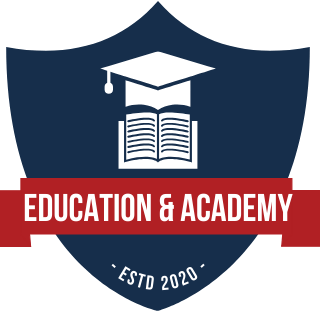Table of Contents
- Introduction
- 1. Artificial Intelligence and Machine Learning
- 2. Virtual and Augmented Reality
- 3. Gamification of Learning
- 4. Personalized Learning Experiences
- 5. Blockchain Technology in Education
- 6. Microlearning and Bite-Sized Content
- 7. Learning Analytics
- Conclusion
Introduction
The educational landscape is continuously evolving, influenced by technological advancements that reshape how we teach and learn. As we head into 2024, several emerging trends are poised to revolutionize education technology (EdTech). These trends promise to improve accessibility, engagement, and overall learning outcomes. In this article, we’ll explore the top seven emerging trends in education technology for 2024, providing insights into how they can enhance the learning experience.
As we embrace these advancements, the goal remains clear: to create learning environments that are inclusive and effective for all students.
1. Artificial Intelligence and Machine Learning
Artificial Intelligence (AI) and Machine Learning (ML) are transforming education by providing personalized learning experiences tailored to individual student needs. AI can analyze student performance data to identify areas where they struggle and recommend resources accordingly. This creates a more adaptive learning environment that can lead to better educational outcomes. For more insights on how technology drives personalized learning, refer to 10 Ways Education Systems Adapt in the Digital Age.
FAQs:
- What are some examples of AI in education? Virtual tutors, grading automation, and personalized learning platforms like Knewton are great examples.
- How does AI improve student engagement? By providing real-time feedback and personalized learning paths, AI keeps students more engaged and motivated.
AI is not just a tool; it’s an educational ally, helping educators understand their students better.
2. Virtual and Augmented Reality
Virtual Reality (VR) and Augmented Reality (AR) offer immersive learning experiences that traditional methods simply can’t match. These technologies allow students to explore complex environments and concepts in a hands-on way. For example, medical students can practice surgeries in a simulated environment, while history students can take virtual field trips to ancient civilizations. Explore the historical context of educational innovations in From Monasteries to Modernity: The Birth of Universities.
Visual Element:
| Technology | Use Case | Benefits |
|---|---|---|
| VR | Medical training | Safe practice, skill development |
| AR | History lessons | Engaging storytelling, real-world context |
Imagine learning about the human body by actually seeing and interacting with a 3D model—this is the future of education!
3. Gamification of Learning
Gamification involves incorporating game-like elements into educational settings to boost motivation and engagement. This trend leverages elements such as points, badges, and leaderboards to make learning fun and competitive. As learners progress through challenges and earn rewards, they are more likely to remain committed to their studies. For additional insights on student engagement strategies, check out 10 Engaging Strategies for Teaching Critical Thinking.
FAQs:
- What are the benefits of gamification in education? Increased motivation, higher retention rates, and enhanced collaboration among students.
- Can gamification be applied to all subjects? Yes, subjects ranging from math to language arts can benefit from gamified elements.
Learning can be as thrilling as a game; it just requires the right elements to spark that excitement!
4. Personalized Learning Experiences
Personalized learning tailors educational experiences to meet the unique needs and preferences of each student. With the help of technology, educators can create customized lesson plans that consider a student’s learning style, pace, and interests. This approach not only fosters engagement but also promotes a deeper understanding of the material. For more on personalized learning, refer to Exploring Pedagogical Theories: Historical Perspective.
FAQs:
- How can schools implement personalized learning? By using data analytics and adaptive learning technologies to identify student needs.
- What are the challenges of personalized learning? Ensuring all students have access to the necessary technology and training educators to effectively implement personalized strategies.
The one-size-fits-all model is outdated; personalized learning is the way forward to meet diverse student needs.
5. Blockchain Technology in Education
Blockchain technology is making waves in education by offering secure and transparent ways to store and share academic records. This technology can help combat issues like credential fraud and streamline processes like transcript verification. In addition, blockchain can facilitate lifelong learning by allowing learners to carry their educational achievements with them throughout their careers. For insights into educational policies related to technology, visit 5 Key Policies Shaping Student Success 2024.
Visual Element:
| Benefit | Description |
|---|---|
| Security | Immutable records prevent fraud |
| Transparency | Easy access to verified credentials |
With blockchain, the future of academic records is secure, verifiable, and within the learner’s control.
6. Microlearning and Bite-Sized Content
Microlearning focuses on delivering educational content in small, manageable chunks, making it easier for students to absorb information and retain knowledge. This trend is especially beneficial in a fast-paced world, where attention spans may be shorter. Platforms offering bite-sized lessons cater to busy learners looking for flexibility in their education. For more on effective learning strategies, refer to 10 Effective Strategies for Assessing Literacy Skills.
FAQs:
- What are some platforms that utilize microlearning?
Platforms like Duolingo and Coursera offer microlearning options across various subjects. - How effective is microlearning?
Studies show that learners retain information better when it is presented in smaller, focused segments.
In a world full of distractions, microlearning is a lifeline, offering clarity and focus in education.
7. Learning Analytics
Learning analytics involves collecting and analyzing data on student performance to inform educational strategies. By understanding how students learn and where they struggle, educators can make data-driven decisions to improve teaching methods and student outcomes. This trend emphasizes the importance of evidence-based approaches in education. To explore how analytics can enhance education, check Top 5 Strategies for Effective Technology Integration in Education.
FAQs:
- What tools are used for learning analytics?
Tools like Google Analytics and Tableau can help educators track student engagement and performance. - Can learning analytics benefit both students and teachers?
Absolutely! Students receive tailored support, while educators can refine their teaching strategies based on real-time data.
Data is the new gold in education; leveraging it wisely can lead to transformative learning experiences.
Conclusion
As we look ahead to 2024, the intersection of technology and education presents exciting opportunities for enhancing the learning experience. From AI-driven personalized learning to immersive VR environments, these emerging trends have the potential to engage students like never before. By embracing these innovations, educators can create a more dynamic and effective educational landscape that prepares students for success in the future.
Stay updated on these trends by visiting authoritative sources like EdSurge and Inside Higher Ed for more insights into the future of education technology. Happy learning!



